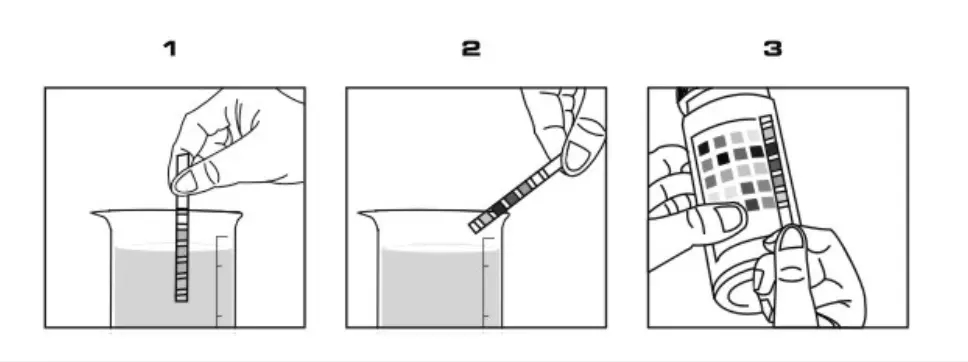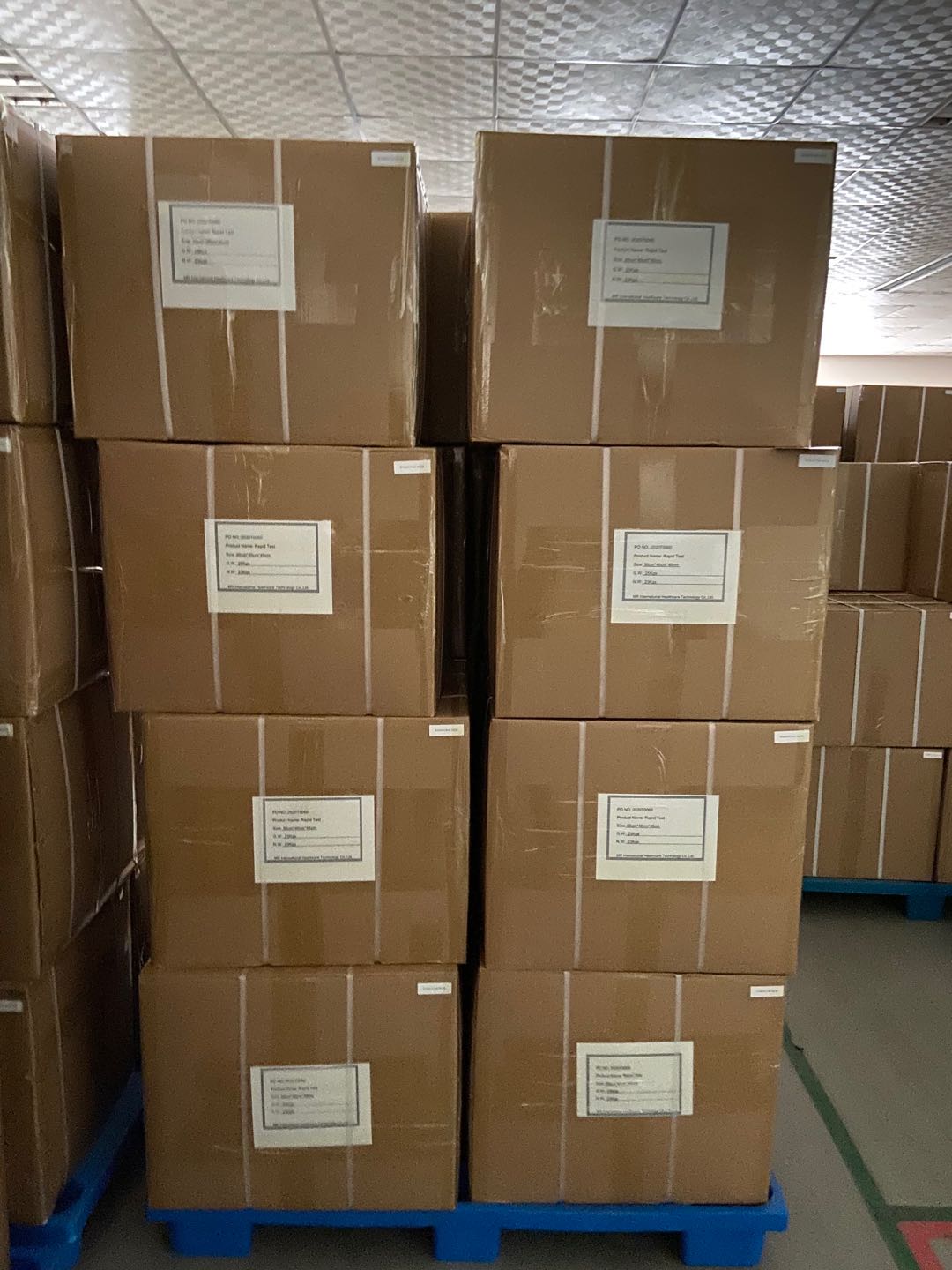Leucocytee
Test area react with esterase in leucocytes(granulocytic leukocytes).Normal urine sample generally yield negative result; positive results(+or greater) are clinically significant. Individually observed "Trace" results may be of questionable clinical
significance; however "Trace" results observed repeatedly may be clinically significant."Positive" results may occasionally be found with random sample from females due to contamination of the sample by vaginal discharge. Elevated glucose
concentrations(160mmol/L) or high specific gravity may cause decreased test results.
Nitrite
Gram-negative bacteria in urine converts nitrate(derived from foods)into nitrite. The reagent strip is essential to nitrite and
won't react with the other substances in urine.Pink spots or edges on the strip should not be interpreted as positive result,but any degrees of uniform pink color development should be taken as positive result.The degrees of color development the numbers of bacteria are not in large amount.Negative result may occur(1)when urine doesn't contain organism that caused the conversion from nitrate to nitrite.(2)when urine has not remained in the bladder long enough(four hours up)to let the nitrate covert into nitrite.(3)the nitrate in the foods is absent.large High volume of specific gravity in urine may reduce the sensitivity of the test.1.4mmol/L ascorbic acid or less won't interfere the result.
Urobilinogen
The reagent strips can detect urobilinogen in low amount as 3μmol/L(approximately 0.2 Ehrlich unit/dL) in urine. A result of 33μmol/L in urine indicate the critical value. representing the transition from normal to abnormal, which requires further check on patients and samples.The negative results are not final to determine the absence of urobilinogen.
Protein
Protein in urine may lead to:
(1) Occasionally presented urine microalbumin may be functional albuminuria or postural proteinuria caused by physiological albuminuria, such as diet, sport ,mental stress, etc.
(2) Continuously presented urine microalbumin, microalbumin and glucose, or microalbumin and blood are with great clinical significance.
pH
The strip tests for pH values are generally in the range of 5.0-8.5 visually and 5.0-9.0 instrumentally.
Blood
Blood is often found in the urine of the menstruating females. Haemoglobin 150μg/L-620μg/L is approximately equivalent to 5-15 cells/μL intact erythrocytes. The reagent strip is highly sensitive to haemolobin and thus can be used as a supplementary to the microscopic examination. The sensitivity of the strip might be reduced in urine with a large amount of specific gravity. The strips are equally sensitive to myglobin as to haemoglobin. Certain oxidizing contaminants, such as hypochlorite, may lead to false positive results. Microbial peroxidase associated with urinary tract infection may also produce a false positive result. Vitamine in urine may not influence the result of the test
SG
The reagent strip for Specific Gravity allows the urine sample specific gravity between 1.000 and 1.030.In general, the mean error between the results of the strip test and those from the refractive index method is only 0.005.To make it more accurate,0.005 may be added to reading from urines wit pH equal or greater than 6.5.Urine reading instrument can automatically make these adjustments in strip-readings. The urine nonionic constituents such as glucose or radiopaque dye won't make any changes in the test. Highly buffered alkaline urines may cause the low reading comparing with the other methods. Elevated specific gravity readings may occur in the presence of moderate quantities of protein(1g/L-7.5g/L).
Ketone
The reagent strip acetone reacts with acetoacetic acid of urine. It doesn't do with β-hydro butyric acid. Normal urine sample usually shows negative results in the test. False positive results may occur in highly pigmented urine or those containing a large amount of levodopa metabolites
Bilirubin
Normally, even the most sensitive method can't detect bilirubin in urine. It is abnormal to have little bilirubin in urine, which
requires further inspection. Medicines that dyes urine red and anything that shows red itself in an acid medium e.g.,
phenazopyridine may affect the test result. High concentration of the ascorbic acid may cause false negative result
Glucose
The test is for specificity of glucose. There is no false positive result occurred in reagent strip, caused by any other substance in urine. When the ascorbic acid concentration≧2.8mmol/L or acetoacetic acid concentration≧1.0mmol/L,the sample of glucose concentration is 3~7mmol/L may occur false negative result.



